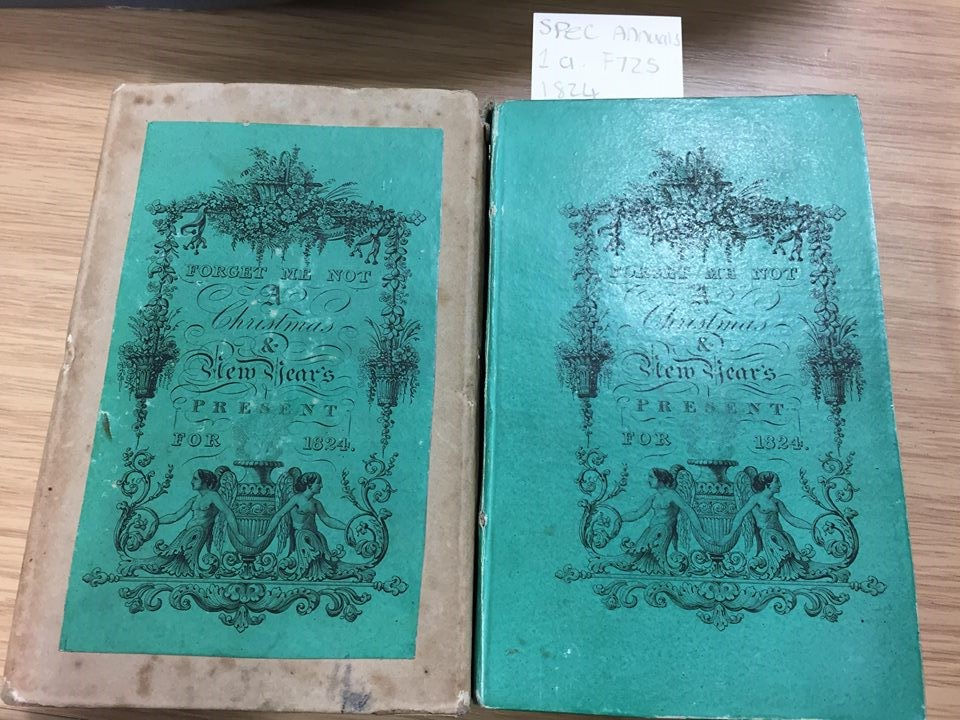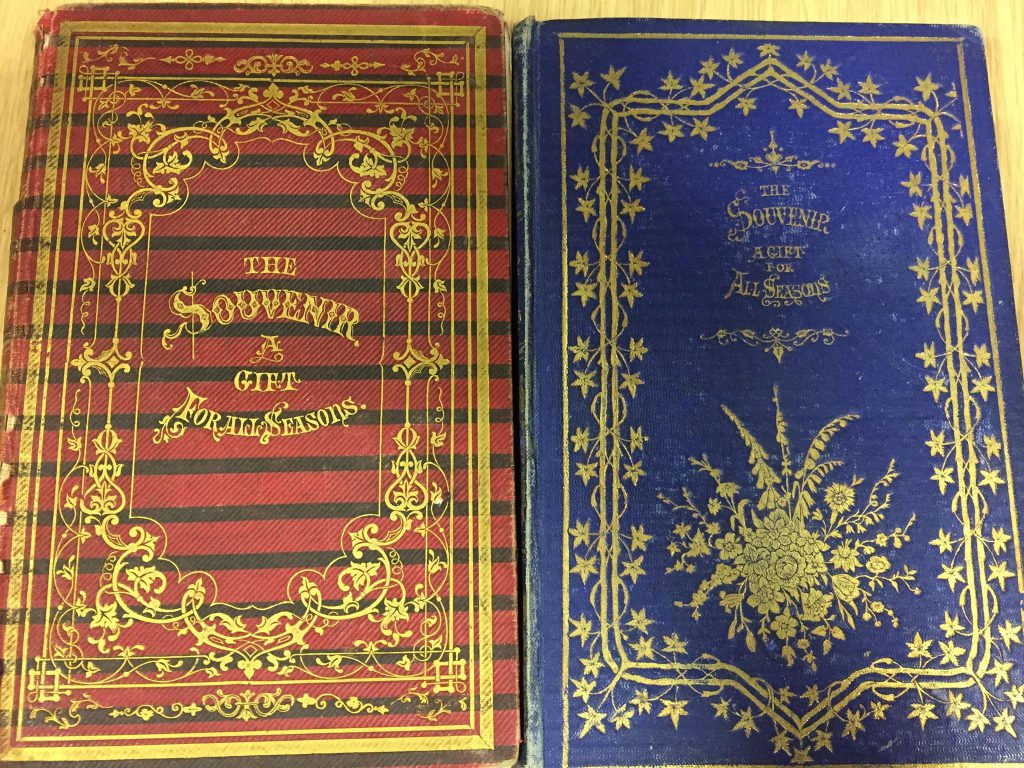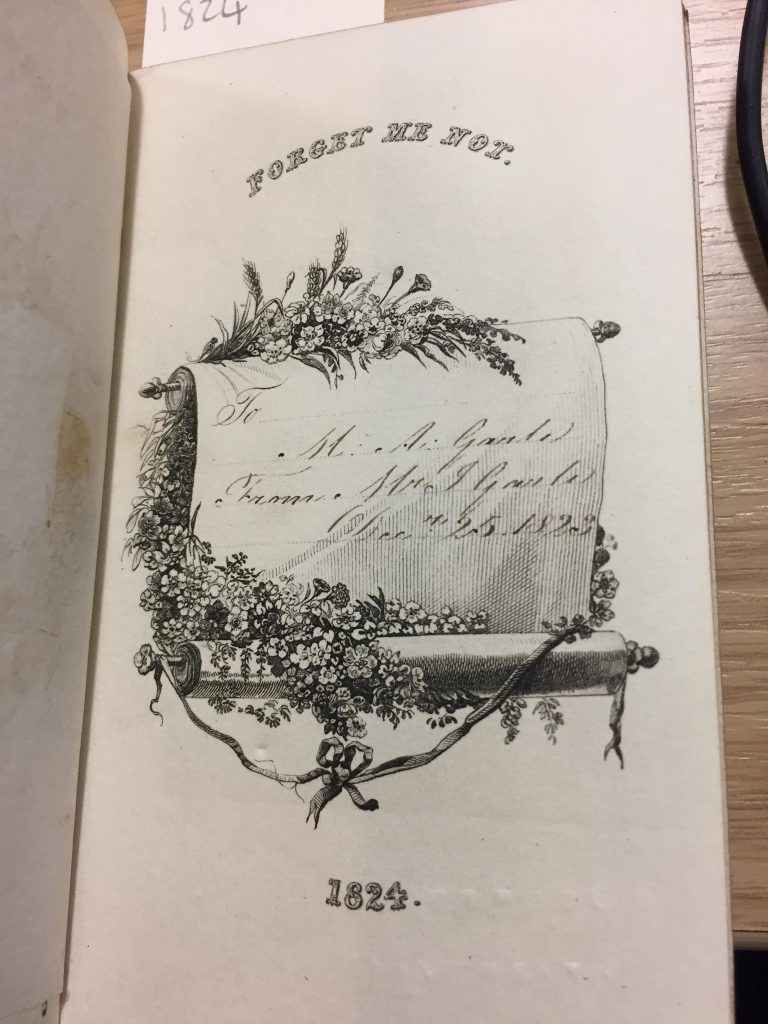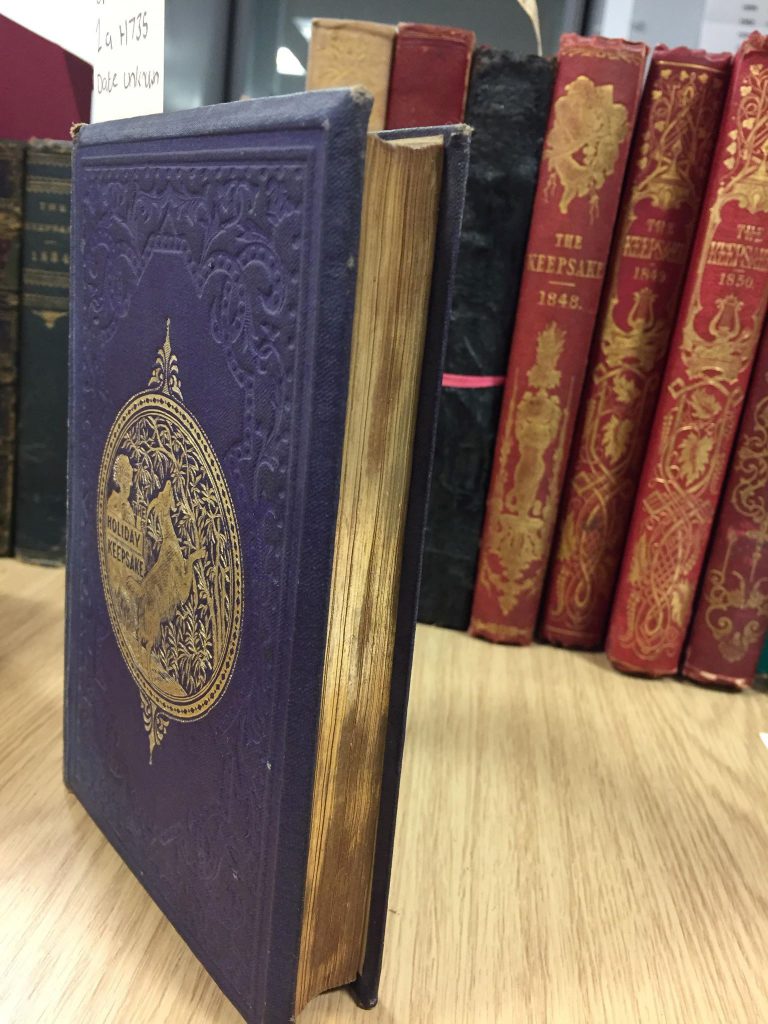
For the last few months, I have been undertaking a SOTA300 work placement here at the Special Collections and Archives. The key focus of the placement has been to catalogue the literary annuals collection; we have around 200 literary annuals in the collections. The literary annuals were popular in Britain in the early-mid 19th Century; most of the annuals we have are dated from 1830-50 and span across many different titles. I have been cataloguing the binding details and inscriptions found in the collection. The annuals were typically targeted as gifts for the female audience with many even written by women. This is evident in the inscriptions as many of the annuals have been dedicated to women: family, friends, and sometimes prospective lovers. The annuals were often extravagantly designed with the content being made up of short poems and pictures. They ranged from tiny pocket-sized annuals to larger ‘scrapbooks’ and ‘drawing room’ books which were intended to be displayed in cabinets. Many prominent authors disparaged the literary worth of the annuals, but they nevertheless have proved important in literary history; the annuals influenced the publishing market and invoked changes due to their sheer popularity.
There are distinct differences between the older annuals; like the early Forget me Nots (the first of their kind in Britain) and the later annuals as seen in the pictures below. The annuals saw the introduction of new binding techniques.

The Forget me Not for 1824 was one of the first annuals introduced in Britain. The book is hardback and is kept in a cardboard slipcase; the pictures and designs are intricate, but it is clear this is an early prototype for what was to come

The Souvenirs pictured here are from 1848 and 1853. There is a clear shift towards lavish designs; the colours are unique, and the use of gold was commonplace across the annuals.
Silk was used on some of the earlier annuals, with leather or cloth covers increasingly used for durability. The use of bright colours and embossed designs were introduced in this period, and it became incredibly commonplace for gold to adorn the annuals; gilt-tooled/blocked designs and gilt edges became almost synonymous with the annuals. The literary annuals were innovative, for example by using steel plate engravings. The standard gradually increased as audiences desired the most attractive books to own.
The annuals were ideal Christmas and New year gifts. They were released late in the year and were dated for the following year, much like modern annuals. The Forget me not pictured above provides an example of an annual gifted at Christmas. This particular copy in our collection is inscribed ‘To M. A. Garle From Mr J Garle. December 25th 1823.’ This appears to be a gift from a husband to his wife; the presentation plates were provided in order to prompt buyers to dedicate their editions.

Some of the annuals were even published in Liverpool, and many of the copies in our collection have links to Liverpool as they have been gifted by prominent locals such as the Rathbones, the Holt family, Sir Henry Tate (1819-1899), and Sir. Charles Sydney Jones (1872-1947). Meanwhile, there are some other annuals in the collection from America and mainland Europe; the annuals proved popular worldwide. With their beauty and poetic contents making them ideal Christmas gifts, it is easy to see why they reigned for so long.
Some of the annuals will be presented in our upcoming exhibition. From the beginning of second semester, the display will show a selection of the bindings and the interesting inscriptions alongside further details and information. Visit the exhibition in the Sydney Jones Library from February 2019 to see more!
